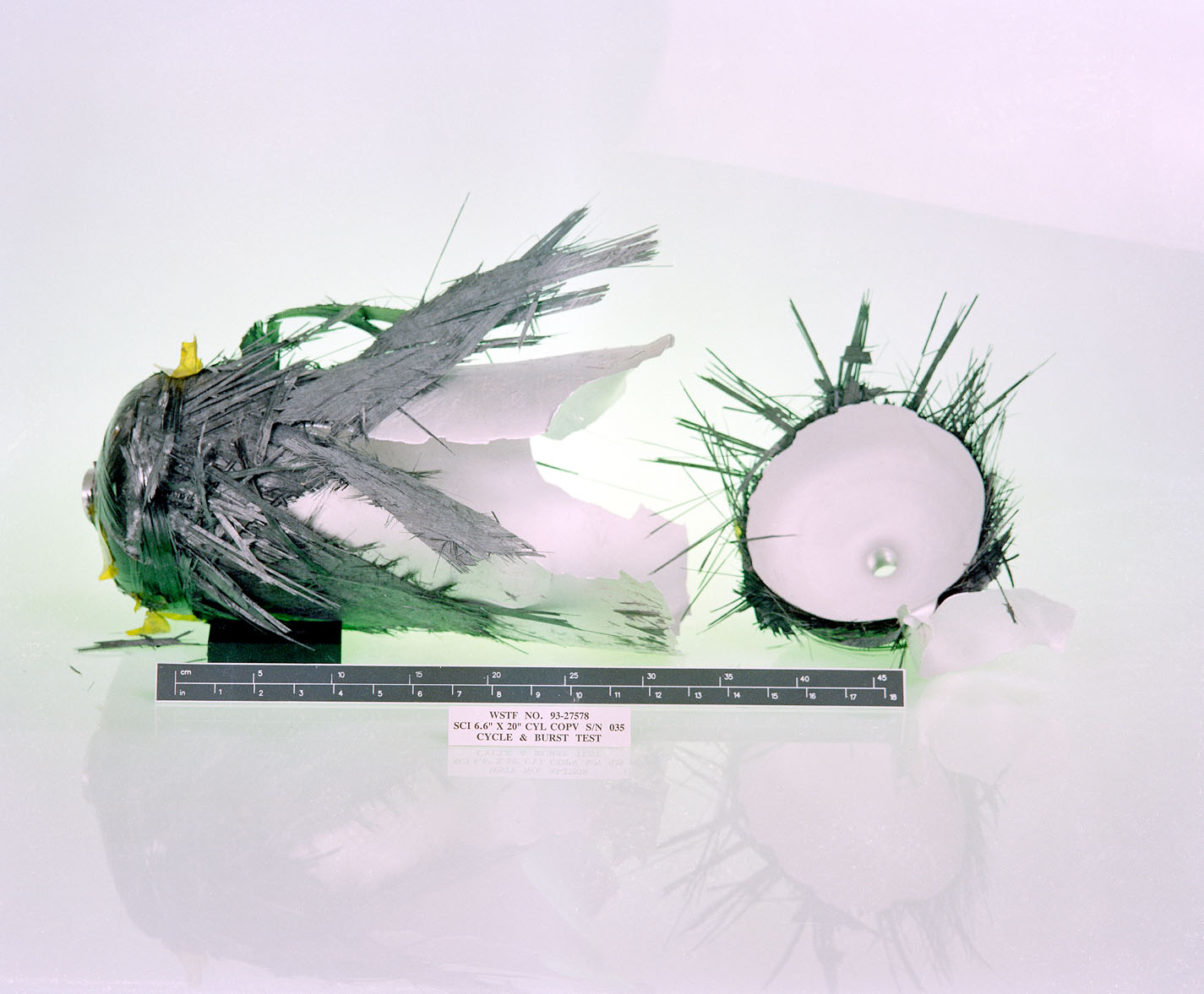With nearly 50 years of performing various destructive tests for both government and industry and through our support of COPV Standards Development, our Composite Overwrap Pressure Vessel (COPV) group can perform destructive testing on both simple and complex systems with difficult-to-measure pressure vessel attributes. We can test on single and multiple pressure vessels using a variety of fluids including oils, water, and cryogenic fluids such as oxygen, hydrogen, methane, and nitrogen. Custom fluids can also be used depending on the need.
Along with other pressure testing options, our COPV personnel partner with our in-house Nondestructive Evaluation (NDE) team to utilize various techniques in tandem with destructive and non-destructive testing to provide additional information.
Both standardized and customized data analysis is used to validate and anchor the results of complex models by
- Providing information about how a pressure vessel reacts while it fails,
- Obtaining the yield and strength values,
- Validating pressure vessel design and acceptance testing per existing standards,
- Determining long term sustained load effects,
- Quantifying the reaction of pressure vessels when mechanically impacted, and
- Determining an appropriate rating for specialized pressure vessels that are complex and difficult to model or perform calculations.
Hydrostatic Burst Testing
The hydrostatic test area has several hydraulic pressure systems capable of performing various types of hydraulic pressurized testing. Our workhorse system is capable of pressurizing test articles up to 30,000 psi or until pressure vessel failure. When testing with this system, various measurement equipment is used to monitor the changes in materials behavior during the pressure testing. The measurements taken include pressure, temperature, volume displacement, and strain which has been used in support of various other health-monitoring systems.
Pneumatic Burst Testing
White Sands Test Facility maintains an exclusive capability to perform pneumatic burst testing of pressure vessels up to 25,000 psi or until the vessel fails catastrophically. Although containing higher amounts of stored energy, pneumatic testing better represents service environments and is often the only way to perform certain testing. Our skilled team is capable of testing up to 500-lb TNT equivalent.
Material Compatibility Testing
With on-site Materials Testing and Propellants and Aerospace Fluids group support, we can evaluate the reactions of pressure vessel materials exposed to various aerospace fluids and hazardous materials.
Bonfire Testing
Bonfire testing is performed by evaluating pressure vessels charged with gases and placed in a bon fire scenario. White Sands Test Facility has performed bonfire testing to meet DOT and ISO standards up to 500-lb TNT equivalent testing.
Hypervelocity and Low-Velocity Impact Testing
Our COPV experts coordinate with the Hypervelocity Impact Testing group to perform destructive testing that simulates micro-meteoroid orbital debris impacts at extremely high speeds up to 15,700 mph (23,000 feet per second) on composite pressure vessels with a variety of orbital debris compositions.
Low-velocity impact testing is also available using a dead-weight tester. The instrumented mechanical impact tester (IMIT) has eight load cells to report load response and then calculate energy as a result of the load. A variety of coupons and components are tested with the IMIT in the many use conditions, as required. This includes cryogenic exposure, oxygen (ambient and heated), and components in ambient and a pressurized stress state.



























